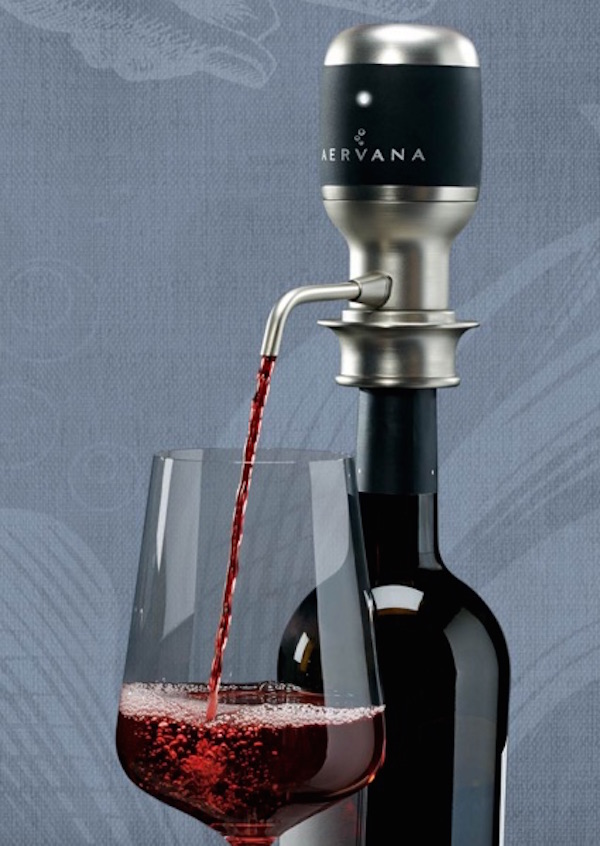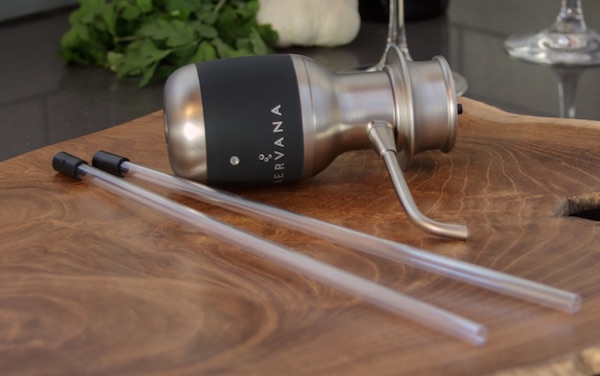
When you have a bottle of young red wine, one of the best ways to help it taste its best is to give it a bit of air.
In the long term, air is not a good thing for wine. That’s why we have corks and screw caps – to keep out the oxygen. During the winemaking process, for the most part air is kept away from wine.
When a wine is young, it’s pretty tightly wound. It’s been in barrels and tanks and a bottle for a couple of years. Wine experts talk about letting a wine “breathe,” and that’s exactly why we like to aerate a red wine before we evaluate it: It gives the wine its best chance to shine.
There are three basic ways to loosen up a red wine with a bit of air.
- The first is to pour it into a good-sized glass and swirl it around for a while, then let it sit and open up. This could take a few minutes.
- The second is to decant the wine. An easy way is to pour the entire bottle into a pitcher (a beer pitcher works really well), then put a funnel into the bottle and pour the wine back in (do it slowly; we’ve found from experience that it can overflow and make a mess if you aren’t careful).
- Use an aerator. This typically is a device that fits into the opening of a wine bottle and adds air to a wine as it is poured into a glass.
Enter the Aervana
[youtube id=”_a8Y_9S31zE” width=”620″ height=”360″]
We recently received a device called the Aervana, purported to be the world’s first electric wine aerator. It’s simple enough to use, and it looks good in the process.
The most difficult part of using the Aervana is putting in the six AAA batteries (included), which really doesn’t take more than a moment. Add the plastic tube to the bottom, easily slide it into a bottle, and it’s ready to use.
The Aervana is rather slick. It has a push button on top and a spout sticking out the front. Put the glass under the spout, push the button, and wine comes out – with plenty of oxygen added in the process.
We tried a side-by-side comparison with a bottle of young, tight-as-nails red Bordeaux, a wine that had a fair bit of earthiness and not a whole lot of fruit showing in its youth.
The first glass was poured straight from the bottle, and the second glass was poured from the Aervana. They were then tasted blind. The Aervana-treated glass immediately began to show a lot more fruit, which was absent from the first glass. On the palate, it also tasted fresher and more lively. The differences were startling.
A few other benefits of the Aervana

- It has a constant flow rate, meaning the wine comes out evenly and precisely. It makes for a pretty nice pour.
- It’s sleek looking. The Aervana is attractive and adds a point of conversation for your next wine get-together.
- If you’re using it with an older wine, it leaves the sediment in the bottom of the bottle.
- It works flawlessly. No drips, no worries. That said, it is not designed to preserve the wine, so a bottle with the Aervana left in it will oxidize in a couple of days, just as any open bottle of wine would.
- It works with any normal 750 ml bottle. Just slide the tube into the bottle and push the button.
- It’s simple to clean. Just run some water through it just as you would a wine, and it’s ready for the next bottle of wine.
- While using batteries would seem to be a pain point, the Aervana is touted to be able to handle at least 200 bottles before the batteries require replacement.
While it isn’t cheap, that wouldn’t be expected for a nicely made device such as this. The $100 price tag, however, will help a $5 bottle taste like something four times the price. Looking at it from that point of view, it doesn’t take too many bottles before the Aervana pays off.

Leave a Reply